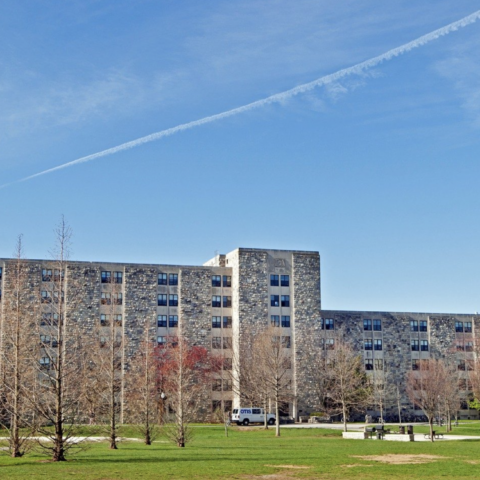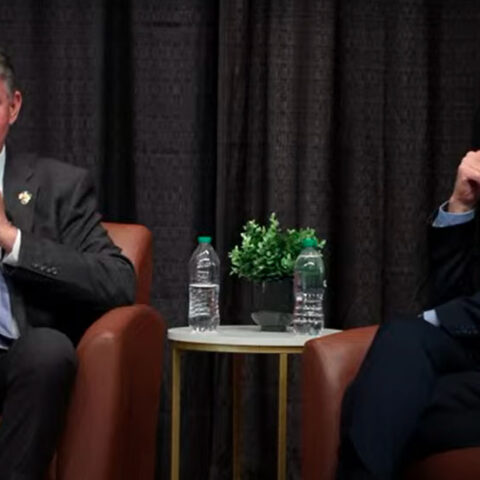By: Andrew Jarnagin

Question: On what issue (domestic or foreign) do you think a polarized Congress can actually agree? What policy progress do you think could be made on this issue?
The United States has an incarceration problem. The federal prison population alone has grown by 790 percent in the past 30 years.[1] After the statistics are expanded to include state and local jails, the U.S. has the highest incarceration rate in the world[2], and when the number of those on probation and parole are added, 1 in 31 American adults are on the rolls of the criminal justice system.[3]
It seems more than a little ironic to call America the “land of the free.” Incarceration is the very antithesis of the rights to life, liberty, and property that form the basis of any just government. This addiction to imprisonment has raised more than a few flags: as Maria McFarland of Human Rights Watch says,“This is one of the major human rights problems within the United States, as many of the people caught up in the criminal justice system are low income, racial and ethnic minorities, often forgotten by society.”[4] Thankfully, criminal justice reforms contain elements that politicians of both liberal and conservative leanings can support.
There are a plethora of arguments from American liberals against the criminal justice system as it exists today. First and foremost, there is a logical inconsistency in demanding better human rights in foreign countries (notably China), while here at home the incarceration rate is second to none. Taking a closer look at the figures shows that the current system disproportionately affects minorities and the poor. Michelle Alexander, a legal scholar, has gone so far as to call the American prison system a new form of Jim Crow laws, noting that “today there are more African-Americans under correctional control – in prison or jail, on probation or parole – than were enslaved in 1850, a decade before the Civil War began.”[5] The numbers are stark: blacks are incarcerated at 5.6 times the rate of whites, and one in nine African-Americans are currently in jail.[6] Historically, laws have been targeted minorities: penalties for crack cocaine, which is prevalent in poor neighborhoods, are 100 times as stringent as those for powder cocaine, which is more common in middle and upper-class areas (this disparity has recently been reduced to a less astronomical but still unjust 18-to-1 ratio).[7]
In addition, the American mindset values punishment over rehabilitation; therefore, released convicts encounter huge barriers to re-entering society. They face continuing addictions, and can be barred from voting, restricted from housing and education benefits, and legally discriminated against in employment. American society as a whole would benefit more from making it easier to reintegrate criminals into society by providing ways to live within the law after their release, rather than getting “tougher” on crime and perpetuating a cycle of recidivism that is both costly and ineffective.
Traditionally conservative Americans can find much to fault in the current system as well. Government debt is a major theme in Republican discourse, and prisons consume a significant amount of taxpayer funds. There is a huge economic cost to imprisoning and supporting the American prison population. Each inmate costs the state or federal government $29,000 a year, and state spending on corrections alone tops $51.7 billion a year.[8] In a time of fiscal crises at both the national and state level, it hardly seems wise to continue locking up our own citizens at this rate. Republicans like Georgia Governor Nathan Deal have recognized this, stating that “we must focus on transforming our corrections system into…a place where low-level offenders are reclaimed and restored by society as functioning members of the community, working to support their own families, and paying taxes.”[9]
Despite the rhetoric of law-and-order politicians, the prison system is welfare at its worst: inmates have all of their necessities provided for, and there is no incentive for personal initiative and self-improvement. The addiction to incarceration threatens to bankrupt us as well as tarnish the American image abroad. The work ethic that has created the American dream is nowhere to be found in the justice system, and legal barriers to employment post-release creates no incentive for ex-convicts to seek legal means to improve their position in life.
Numerous reforms have been proposed to alleviate the problems enumerated above: Congress needs only to act. There are signs that change may be on the horizon. Senator Patrick Leahy, chairman of the Judiciary Committee, has signaled his approval to changes in sentencing, calling federal mandatory minimum sentencing laws “a great mistake.”[10] More resources could also transferred from apprehending and prosecuting low-level drug offenders towards treatment and rehabilitation efforts – in Norway, where rehabilitation is the goal of the justice system, only 20 percent of inmates return to prison.[11] Similar programs to treat drug addictions, counsel criminals, and develop useful business skills should be more widely implemented in the U.S. as well.
Americans jailed for non-violent drug offenses (now over 25 percent of inmates[12]) could be put to work repairing our crumbling infrastructure. This would both fulfill a desperate need around the country for upgrades to roads, bridges, parks, and utility systems, and provide inmates with a productive outlet of energy and an opportunity to gain valuable skills for their futures after prison.
The state of the criminal justice system today hurts both the average law-abiding citizen and the average criminal. We are paying exorbitant sums to house and feed inmates, while a system that does little to prevent recidivism hardly makes us safer. Convicted criminals face excessive punishment, due to mandatory minimum sentences, and the prison environment does little to allay the root causes of criminal behavior. It is reasonable – and necessary – that Congress reform the criminal justice system, both in the interests of those who respect the law and those who break it.
[1] James, Nathan. “The Federal Prison Population Buildup: Overview, Policy Changes, Issues, and Options.” Congression Research Service. 22 Jan 2013. Web.
[2] Walmsley, Roy. “World Prison Population List (ninth edition).” International Center for Prison Studies. University of Essex: 1 Sept 2010. Web.
[3] Pew Center on the States. “One in 31: The Long Reach of American Corrections.” Pew Center on the States. The Pew Charitable Trusts: Mar 2009. Web.
[4] Biron, Carey L. “U.S. Prison Population Seeing ‘Unprecedented Increase.’” Inter Press Service. 4 Feb 2013. Web.
[5] Alexander, Michelle. “Legal Scholar: Jim Crow Still Exists in America.” NPR Books. 16 Jan 2012. Web.
[6] Mauer, Mark, and Ryan S. King. “Uneven Justice: State Rates of Incarceration By Race and Ethnicity.” The Sentencing Project. July 2007. Web.
[7] Grim, Ryan. “Crack-Powder Sentencing Disparity Reduced By Congress.” The Huffington Post. 28 Aug 2010. Web.
[8] Pew Center on the States. “One in 31: The Long Reach of American Corrections.” Pew Center on the States. The Pew Charitable Trusts: Mar 2009. Web.
[9] Newkirk, Margaret. “The GOP Eases Up on Prison.” Businessweek.com. 1 Mar 2012. Web.
[10] Leahy, Patrick. “Bipartisan Legislation To Give Judges More Flexibility For Federal Sentences Introduced.” U.S. Senator Patrick Leahy. 20 Mar 2013. Web
[11]Adams, William Lee. “Norway Builds The World’s Most Humane Prison.” Time Magazine. 10 May 2010. Web.
[12] De Rugy, Veronique. “Prison Math.” Reason Magazine. July 2011. Web.

